Ryan Ruby at Bookforum:
 “I found myself frequently using the word affinity,” he writes, “and wondered what I meant by it.” Taken together, the book’s ten “essays on affinity” can be described as a kind of manifesto for an anti-critical criticism. Dillon subjects the word to a familiar array of para-academic procedures. He considers its etymology; its relationship to cognate concepts like fascination, appreciation, sympathy, attraction, the crush; its lowly position in the hierarchy of accepted aesthetic categories; the history of its usage in the discourses of literature, science, and theory; its metaphorical relations to images of, for example, fog and light; its unassimilability to the norms and procedures of scholarship; its noncognitive status as an affective atmosphere or mood. Much like Dillon himself, who supplements his freelance work by teaching creative writing at Queen Mary University of London, “affinity” is perched on a wire between the technical jargon of the English department, where interpretations are advanced and arguments in support of them are defended, and the demotic vocabulary of the social cataloguing site, where an algorithm sorts objects according to their similarities, and users are content to simply “like” them. “When I wrote affinity in a piece of critical prose,” Dillon muses, “perhaps I was trying to point elsewhere, to a realm of the unthought, [the] unthinkable, something unkillable by attitudes or arguments.”
“I found myself frequently using the word affinity,” he writes, “and wondered what I meant by it.” Taken together, the book’s ten “essays on affinity” can be described as a kind of manifesto for an anti-critical criticism. Dillon subjects the word to a familiar array of para-academic procedures. He considers its etymology; its relationship to cognate concepts like fascination, appreciation, sympathy, attraction, the crush; its lowly position in the hierarchy of accepted aesthetic categories; the history of its usage in the discourses of literature, science, and theory; its metaphorical relations to images of, for example, fog and light; its unassimilability to the norms and procedures of scholarship; its noncognitive status as an affective atmosphere or mood. Much like Dillon himself, who supplements his freelance work by teaching creative writing at Queen Mary University of London, “affinity” is perched on a wire between the technical jargon of the English department, where interpretations are advanced and arguments in support of them are defended, and the demotic vocabulary of the social cataloguing site, where an algorithm sorts objects according to their similarities, and users are content to simply “like” them. “When I wrote affinity in a piece of critical prose,” Dillon muses, “perhaps I was trying to point elsewhere, to a realm of the unthought, [the] unthinkable, something unkillable by attitudes or arguments.”
more here.

 For decades, New Hampshire has generated brisk and gratifying drama with its first-in-the-nation presidential primary. The Granite State momentously destroyed a presidency in 1968, when the Minnesota senator Eugene McCarthy ran against President Lyndon Johnson on an antiwar platform. Johnson had been so confident of his renomination that he had not initially deigned to enter the New Hampshire race, while other leading Democratic politicians, including Robert F. Kennedy Sr., remained aloof, fearful of challenging the president despite his mounting unpopularity during the Vietnam War. Thus, McCarthy was the only major Democrat on the ballot. When the fervor behind his campaign revealed the senator’s surging support, Johnson hurriedly mobilized a write-in effort, which duly yielded him a 50 percent share against McCarthy’s 42—a poor enough showing for a sitting president to embolden Kennedy to enter the race four days later, and for Johnson to announce his retirement from the race two weeks after that. For Joe Biden, the New Hampshire primary’s history is entirely hateful.
For decades, New Hampshire has generated brisk and gratifying drama with its first-in-the-nation presidential primary. The Granite State momentously destroyed a presidency in 1968, when the Minnesota senator Eugene McCarthy ran against President Lyndon Johnson on an antiwar platform. Johnson had been so confident of his renomination that he had not initially deigned to enter the New Hampshire race, while other leading Democratic politicians, including Robert F. Kennedy Sr., remained aloof, fearful of challenging the president despite his mounting unpopularity during the Vietnam War. Thus, McCarthy was the only major Democrat on the ballot. When the fervor behind his campaign revealed the senator’s surging support, Johnson hurriedly mobilized a write-in effort, which duly yielded him a 50 percent share against McCarthy’s 42—a poor enough showing for a sitting president to embolden Kennedy to enter the race four days later, and for Johnson to announce his retirement from the race two weeks after that. For Joe Biden, the New Hampshire primary’s history is entirely hateful. N
N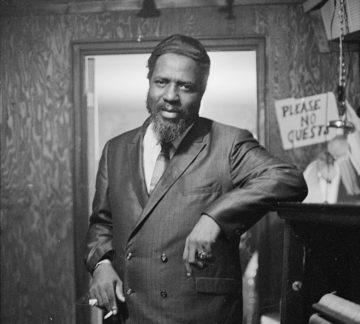 Usually Monk walked. He ambled across the city on feet as light as a tap-dancer. He weaved his way down block after block, whistling, humming, snapping his fingers. Monk liked to take different routes, but most of them led eventually to the Hudson River, where the large man in the strange hat would lean on the railing and watch the lights of the city dance on the black water.
Usually Monk walked. He ambled across the city on feet as light as a tap-dancer. He weaved his way down block after block, whistling, humming, snapping his fingers. Monk liked to take different routes, but most of them led eventually to the Hudson River, where the large man in the strange hat would lean on the railing and watch the lights of the city dance on the black water.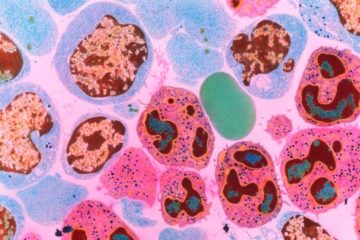 The average adult male has around 36 trillion cells in their body, while average adult females have 28 trillion, researchers have found. Unexpectedly, the mass of small cells in our bodies, such as blood cells, is roughly the same as that of large ones such as muscle cells – a finding that has puzzled researchers.
The average adult male has around 36 trillion cells in their body, while average adult females have 28 trillion, researchers have found. Unexpectedly, the mass of small cells in our bodies, such as blood cells, is roughly the same as that of large ones such as muscle cells – a finding that has puzzled researchers. Madness in gigantic proportions. That’s how Austrian writer Stefan Zweig described Germany in the 1920s. Between French re-occupation, communist and fascist putsches, regional separatist movements, mass migration from Eastern Europe, and the popular introduction of television and radio, there was also the main event: hyperinflation. After World War I, the dollar-to-mark currency exchange rate was thirteen and a half. Less than five years later, it would reach into the trillions. When you ordered a half-glass of water, so the joke went, it would cost you a hundred thousand marks. By the time it was poured, it would cost two-hundred thousand. And without a stable financial value, all other values—moral, political, artistic—seemed to lose their footing. Vice became indulgence. Reality took on a dream-like quality. In response, the country became a seance. It begged for a voice from the deep to make sense of what was happening. And eventually that voice spoke.
Madness in gigantic proportions. That’s how Austrian writer Stefan Zweig described Germany in the 1920s. Between French re-occupation, communist and fascist putsches, regional separatist movements, mass migration from Eastern Europe, and the popular introduction of television and radio, there was also the main event: hyperinflation. After World War I, the dollar-to-mark currency exchange rate was thirteen and a half. Less than five years later, it would reach into the trillions. When you ordered a half-glass of water, so the joke went, it would cost you a hundred thousand marks. By the time it was poured, it would cost two-hundred thousand. And without a stable financial value, all other values—moral, political, artistic—seemed to lose their footing. Vice became indulgence. Reality took on a dream-like quality. In response, the country became a seance. It begged for a voice from the deep to make sense of what was happening. And eventually that voice spoke. The previous week, I’d traveled with two of these American friends, both philosophers, Steven and Morgan, from Berlin to Hamburg to Lübeck because, again, why not. We ate chicken tikka on jacket potatoes at outdoor tables overlooking the warehouses near the city gates used as the abandoned building where Nosferatu lives in Murnau’s classic 1922 film. Just as I’d lined up my shot in my best imitation Expressionist light, with the setting sun pouring through a keyhole shape in the building, a paddle-boarder glided into the frame to ruin the picture, a 10/10 German prank on a film location tourist.
The previous week, I’d traveled with two of these American friends, both philosophers, Steven and Morgan, from Berlin to Hamburg to Lübeck because, again, why not. We ate chicken tikka on jacket potatoes at outdoor tables overlooking the warehouses near the city gates used as the abandoned building where Nosferatu lives in Murnau’s classic 1922 film. Just as I’d lined up my shot in my best imitation Expressionist light, with the setting sun pouring through a keyhole shape in the building, a paddle-boarder glided into the frame to ruin the picture, a 10/10 German prank on a film location tourist.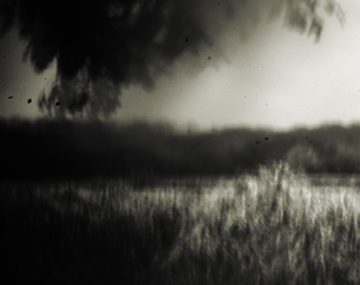 Watching a video of Sebald, at his desk, surveying his photographs with magnifying glass in hand, it is tempting to interpret his work—the prose fiction, the poetry, the essays—as existing, prior to the texts, as an assemblage of pictures. One imagines a pristine terrain of images being dissolved into the current of language, each photograph gradually written away until only the most unyielding ones remain. The jumble of photographs and manuscript pages obscuring and framing each other in the television image of Sebald’s desk are reflected in a similar mixed spatial and temporal aggregation on the printed page, where the whole is defined as much by overlapping and masking as by juxtaposition. Sometimes the edges of the photographs cause shadows to fall on the text and vice versa. Windows and lighthouses, doorways and gravestones: sometimes, the images protrude from the temporal plane of the writing (the time of the narrative); sometimes, they are visible from below the surface. The interruption of reading performed by the images confirms the irregular chronological dynamic of Sebald’s work. Constantly hindered, sent back into countless eddies and still backwaters, time, like the mineral water that is sieved through the salt frames of Bad Kissingen, percolates as much as it flows.
Watching a video of Sebald, at his desk, surveying his photographs with magnifying glass in hand, it is tempting to interpret his work—the prose fiction, the poetry, the essays—as existing, prior to the texts, as an assemblage of pictures. One imagines a pristine terrain of images being dissolved into the current of language, each photograph gradually written away until only the most unyielding ones remain. The jumble of photographs and manuscript pages obscuring and framing each other in the television image of Sebald’s desk are reflected in a similar mixed spatial and temporal aggregation on the printed page, where the whole is defined as much by overlapping and masking as by juxtaposition. Sometimes the edges of the photographs cause shadows to fall on the text and vice versa. Windows and lighthouses, doorways and gravestones: sometimes, the images protrude from the temporal plane of the writing (the time of the narrative); sometimes, they are visible from below the surface. The interruption of reading performed by the images confirms the irregular chronological dynamic of Sebald’s work. Constantly hindered, sent back into countless eddies and still backwaters, time, like the mineral water that is sieved through the salt frames of Bad Kissingen, percolates as much as it flows. Whether we’re living in the age of
Whether we’re living in the age of  Graça Raposo was a young postdoc in the Netherlands in 1996 when she discovered that cells in her laboratory were sending secret messages to each other. She was exploring how immune cells react to foreign molecules. Using electron microscopy, she saw how cells ingested these molecules, which became stuck to the surface of tiny intracellular vesicles. The cells then spat out the vesicles, along with the foreign cargo, and Raposo captured them. Next, she presented them to another type of immune cell. It reacted to the package just as it would to a foreign molecule
Graça Raposo was a young postdoc in the Netherlands in 1996 when she discovered that cells in her laboratory were sending secret messages to each other. She was exploring how immune cells react to foreign molecules. Using electron microscopy, she saw how cells ingested these molecules, which became stuck to the surface of tiny intracellular vesicles. The cells then spat out the vesicles, along with the foreign cargo, and Raposo captured them. Next, she presented them to another type of immune cell. It reacted to the package just as it would to a foreign molecule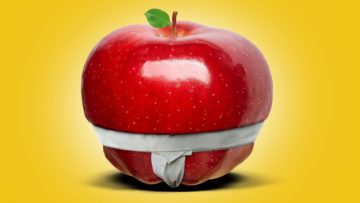 As James Grammer, the president of the
As James Grammer, the president of the 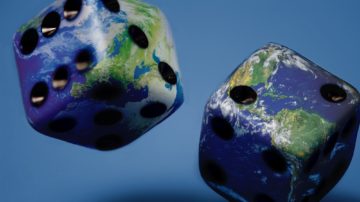 Would you live in a building, cross a bridge, or trust a dam wall if there were a 10 percent chance of it collapsing? Or 5 percent? Or 1 percent? Of course not! In civil engineering, acceptable probabilities of failure generally range from 1-in-10,000 to 1-in-10-million.
Would you live in a building, cross a bridge, or trust a dam wall if there were a 10 percent chance of it collapsing? Or 5 percent? Or 1 percent? Of course not! In civil engineering, acceptable probabilities of failure generally range from 1-in-10,000 to 1-in-10-million. The Republican Party’s primary season officially gets underway four months from today, on January 15, 2024, the day the Iowa caucuses are held. That makes this a fitting moment to take stock of where things stand—and to reflect on the most astonishing and disturbing fact of America’s political present, which is that, short of a medical event that requires him to bow out of the race, the twice-impeached, serially indicted former president Donald Trump, who has led the field by a wide margin for over a year and is currently ahead by
The Republican Party’s primary season officially gets underway four months from today, on January 15, 2024, the day the Iowa caucuses are held. That makes this a fitting moment to take stock of where things stand—and to reflect on the most astonishing and disturbing fact of America’s political present, which is that, short of a medical event that requires him to bow out of the race, the twice-impeached, serially indicted former president Donald Trump, who has led the field by a wide margin for over a year and is currently ahead by